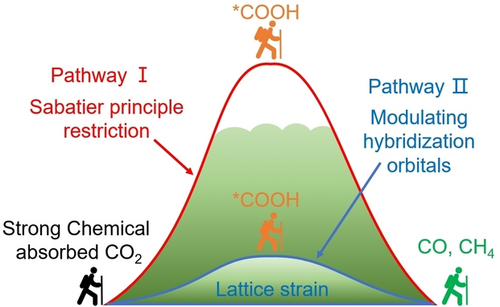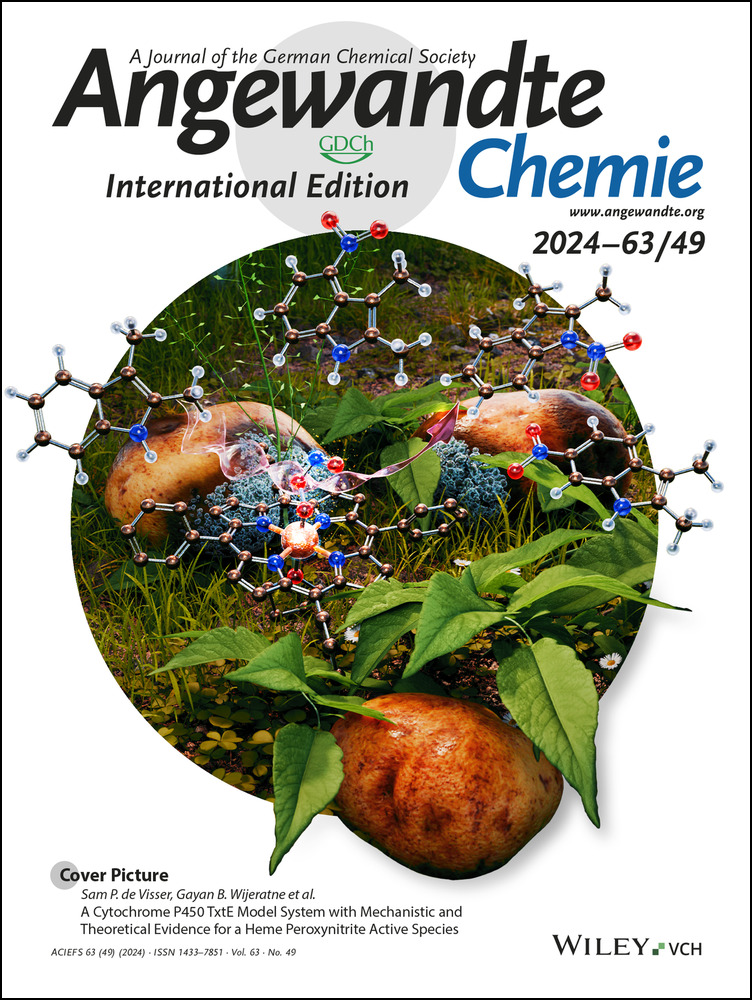Enhancing d/p-2π* Orbitals Hybridization via Strain Engineering for Efficient CO2 Photoreduction
Graphical Abstract
Abstract
The photoconversion of CO2 into valuable chemical products using solar energy is a promising strategy to address both energy and environmental challenges. However, the strongly adsorbed CO2 frequently impedes the seamless advancement of the subsequent reaction by significantly increasing the reaction activation energy. Here, we present a BiFeO3 material with lattice strain that collaboratively regulates the d/p-2π* orbitals hybridization between metal sites and *CO2 as well as *COOH intermediates to achieve rapid conversion of solidly adsorbed CO2 to critical *COOH intermediates, accelerating the overall CO2 reduction kinetics. Quasi in situ X-ray photoelectron spectroscopy and in situ Fourier Transform infrared spectroscopy combined with theoretical calculation reveals that the optimized Fe sites enhance the adsorption and activation effect of CO2, and continuous internal electrons are rapidly transferred to the reaction sites and injected into the surface *CO2 and *COOH under the condition of illumination, which promotes the rapid formation and stability of *COOH. Certainly, the performance of CO2 photoreduction to CO is improved by 12.81-fold compared with the base material. This work offers a new perspective for the rapid photoreduction process of strongly adsorbed CO2.
Conflict of Interests
The authors declare no conflict of interest.
Open Research
Data Availability Statement
The data that support the findings of this study are available in the supplementary material of this article.





